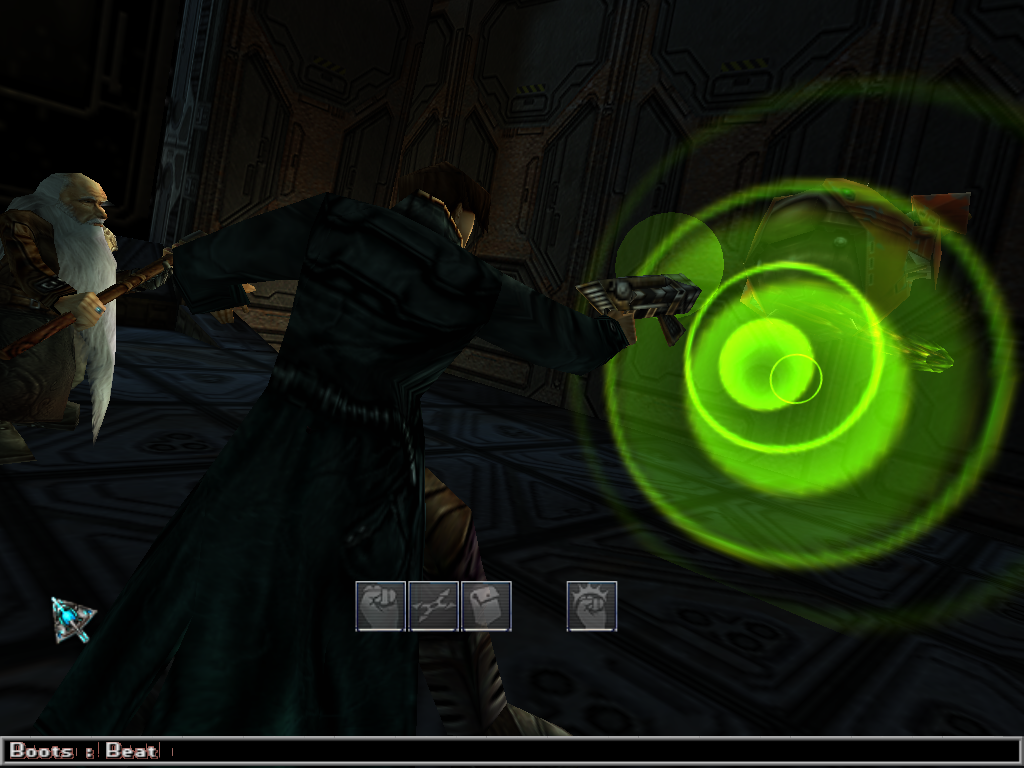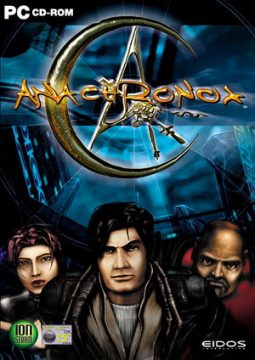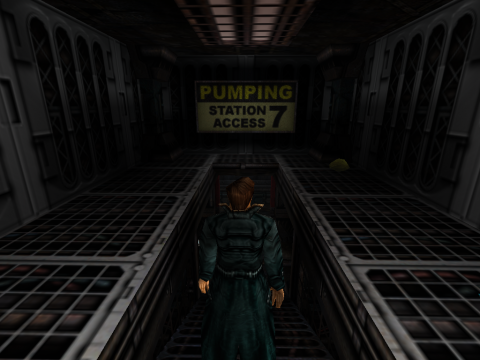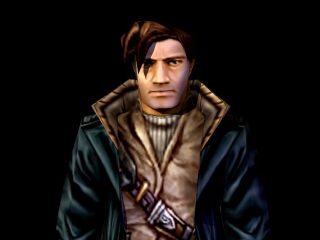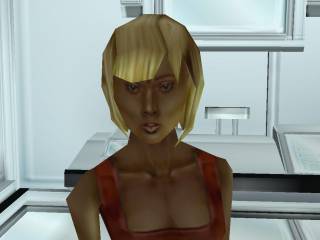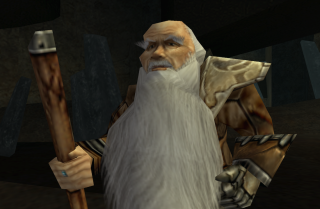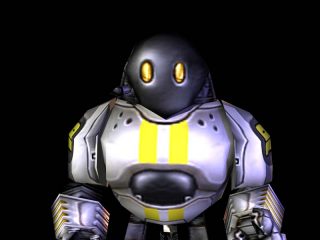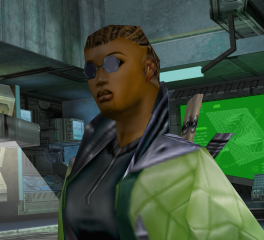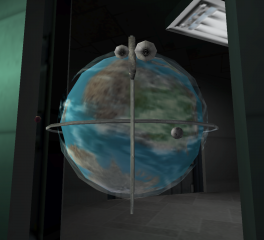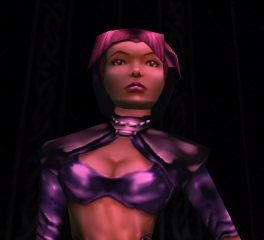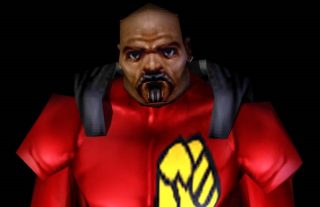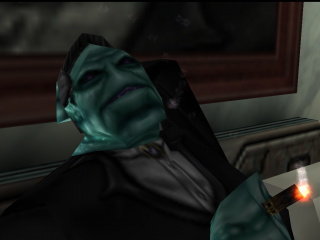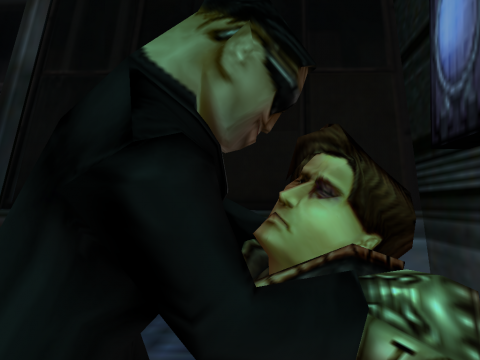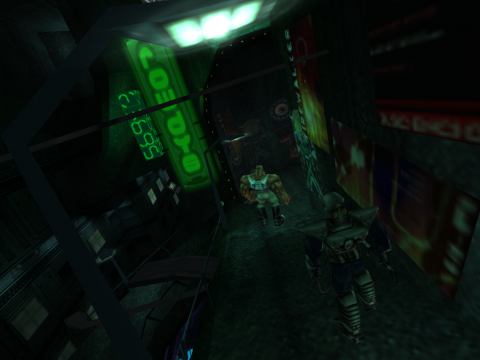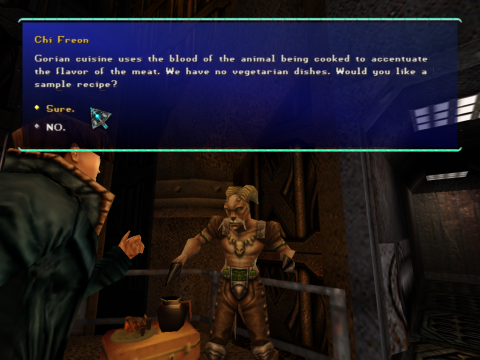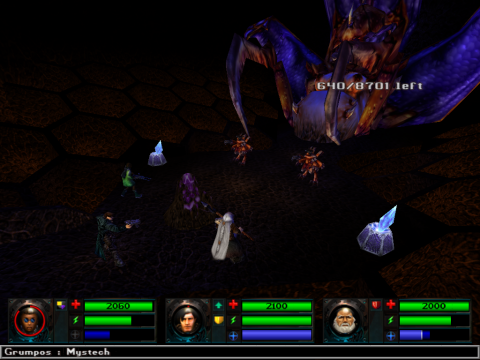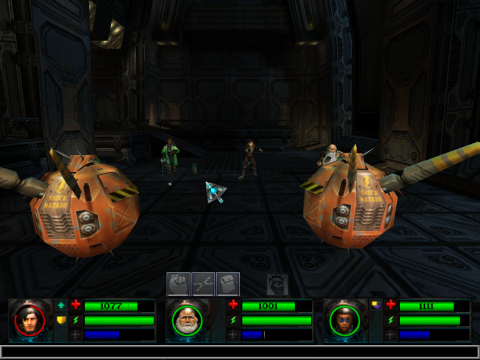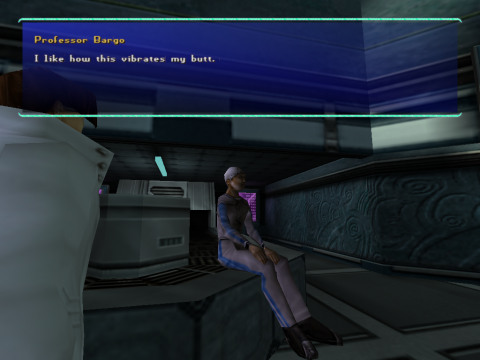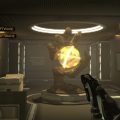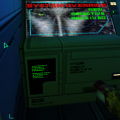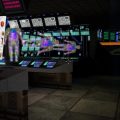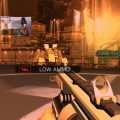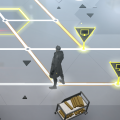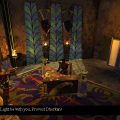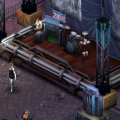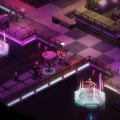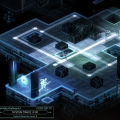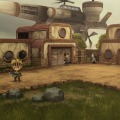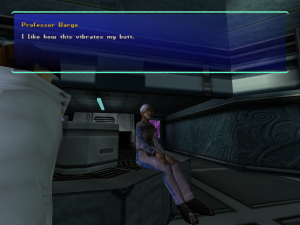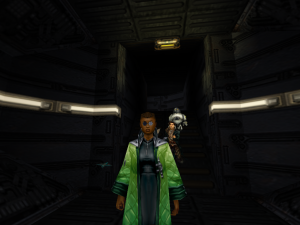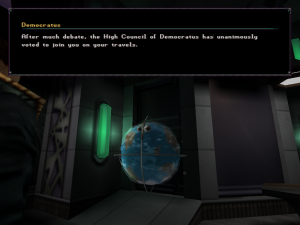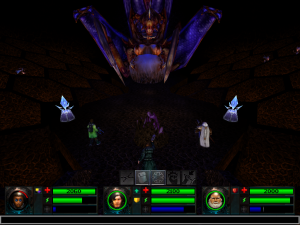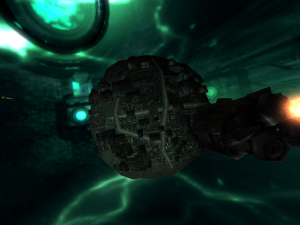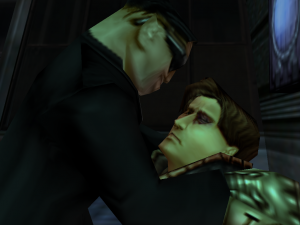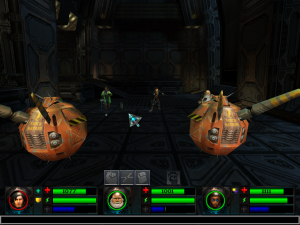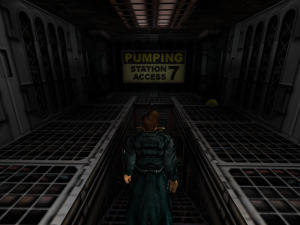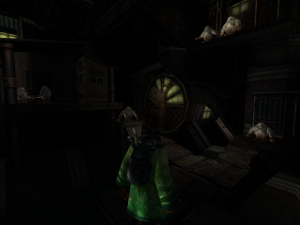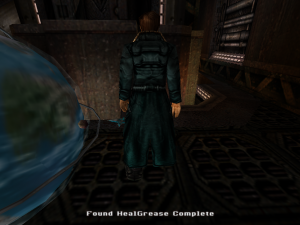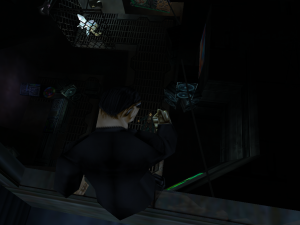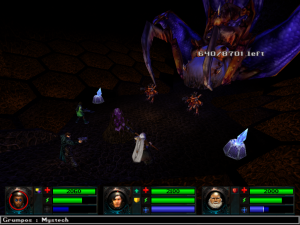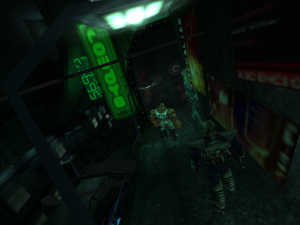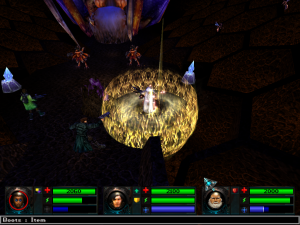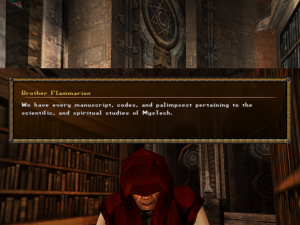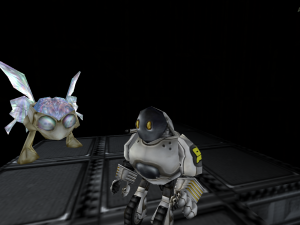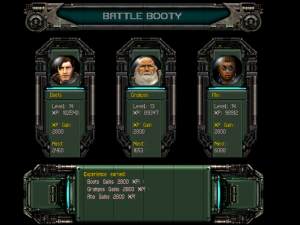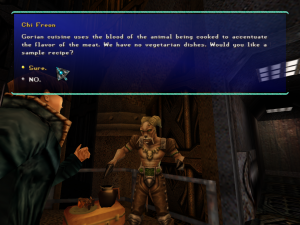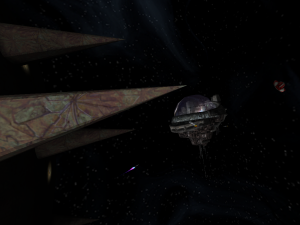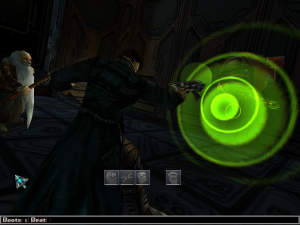What if Western devs started to develop JRPGs? Anachronox might be the answer to this question. Along with games from this same time period like Septerra Core (1999), Anachronox is an example of mixing Western and Eastern design philosophies. The result is a very original game with a flavor that mixes comedy, science fiction, cyberpunk, and film noir.
Developed by Ion Storm, the studio responsible for both memorable games like the original Deus Ex and flops like Daikatana, this JRPG was produced by Tom Hall, which is more known for shooters like Doom and Wolfenstein 3D. As a matter of fact, Anachronox uses the id Tech 2 engine, created for Quake II and also used for Daikatana. The engine is heavily modified, though, as it was created primarily for shooters.
Anachronox was a labor of love. The main character was part of an old project created by Hall and was first drawn out when he was still in college. Since its inception on Ion Storm, the development cycle lasted four years. The original game design documents had 460 pages, more than three times the average, according to Hall, and had a scope well beyond the game.
The main character is Sylvester “Sly Boots” Bucelli, a former detective which has fallen into disgrace. He starts out looking for a job to pay his debts to Detta, a local crime boss and ends up joining other colorful folks in a journey to save the world. The story revolves around a mysterious alien technology called MysTech. Boots and his friends eventually get involved with this technology and, after it awakens, they start to use it and to become entangled in a time travel plot that might destroy the universe.
Characters
Sylvester “Sly Boots” Bucelli: A former private detective that has debts with a criminal and is living a rough period of his life. His “office” is above a bar in a bad part of Anachronox. Ability: lockpicking.
Fatima Dohaan: Boots’ secretary. She’s dead… but her personality lives inside a PDA-like structure that flies around her boss (which is also your mouse). Ability: being your menu.
Grumpos Matavastros: A scholar and former curator of the MysTech Museum in Anachronox. He’s completely obsessed by MysTech. Ability: talking until people can’t stand him anymore (let’s be clear: this is an actual ability).
PAL-18: Boots’ sarcastic robot. He’s very spirited and becomes self-conscious during the course of the game. Ability: hacking.
Dr. Rho Bowman: A brilliant scientist that fell into disgrace and was banished after publishing a revolutionary book about MysTech that was hated by the scientific community. Ability: analyzing things.
Democratus: A miniature, democratic planet that travels with Boots. Yes, a whole planet. You have a planet in your party in this game. Ability: tractor ray.
Stiletto Anyway: Boot’s former companion and detective in training. Has a mysterious past and is linked to Boots’ downfall. Ability: Throw coins at tiny spots.
Paco “El Puño” Estrella: Alcoholic ex-superhero whose life took a dark turn after his comic book series was canceled. Ability: rage might.
Detta: An old acquaintance of Boots that turned into a crime lord. Has some mysterious connections with the main character.
If there is one coherent theme that is explored during the narrative, it’s certainly the past and how it affects the present. Most of the characters, like Boots, have unresolved issues that they have to overcome during the story. That is well represented during the opening scene, in which a thug sent by Detta beats Boots and throws him out of the window of his own home. He has metaphorically and literally hit rock bottom and the only way now is forward.
Saving the world in Anachronox stands for more than just saving something, it’s about the characters saving themselves. Rho blames herself for what happens to her world as soon as the gang arrives, Paco wants to relive his glory days and Boots has to get up from the gutter and get his life and his pride back together. Unfortunately, the main story was left unfinished because the game ends with a plot twist and the planned sequel never came because the studio was facing difficulties at the time. Despite this issue, it can be said that Boots’ personal arc was finished.
Not all the characters of the game get the same attention that Boots gets, though. While his story with Fatima, Stilleto, and Detta is the most complete, many characters do not really have the time to solve their issues. They just join the party and their story stops to be developed from there, which is basically the case for Rho and Paco. They want to save the world to overcome their mistakes of the past, but that’s it.
Anachronox’s graphics might not be the most technically advanced game, largely thanks to the Quake II engine, as its characters are fairly boxy. Compared to Final Fantasy X, which came out in the PlayStation 2 in the same year, it looks hugely dated. But aesthetically, it’s still quite original, and has a cool vibe, not too dissimilar from Deus Ex, another title from Eidos around the same time. The camera during the cutscenes might seem very strange and wild when you first see it, as not many games use it that way, zooming and running around the screen, but it has its charm. It adds to the strangeness of the setting. If you dislike the cutscenes, though, too bad, because you can’t skip them.
During the journey, you will visit many planets and they all have a very distinct feel. While Anachronox looks like what was left of a cyberpunk dystopia in space, places like Sunder are clean and more evocative of classic space opera feelings. There are also places like Limbus, a planet which resembles a tribal place and even setting which are distinct in how they work, like Democratus, a planet in which all the citizens have to vote for all major decisions.
The area design has its positive and negative points. While there is a lot of variation and color, the design of the place, especially in Anachronox itself, are very confusing sometimes. The opening locations are large and require some exploration, and you can easily be lost for quite some time there. Dungeons also are very linear, though (only still somewhat confusing in some instances). If the game was really open, this would be less of a problem, but the story is fairly linear and you can easily lose track of where you’re going because many corridors are very similar. An in-game map, a sorely missed feature, is definitely something that would have made the journey considerably less annoying, as there is a lot of backtracking.
The environmental storytelling of the world has to be praised. There is a certain part in which you have to look for a guy called Eddie, a high profile informant. Way before you even know that you may need to find him, you will find several graffiti over Anachronox in which is written “Eddie Knows”. It’s a good foreshadowing example. Also, it is very important that you read the signposts that you can find because, as stated before, the game design in some areas like Anachronox is simply too confusing. If you do not pay attention to the signs, you will certainly get lost.
The music was outsourced to Soundelux Design Music Group, which also hired Bill Brown. The songs have a very industrial feel with a space vibe that gets increasingly heavier as the story progresses. Each character has its own theme song and the company has designed the sound to be dynamically changed according to interaction and exploration. All the cutscenes are voiced and most of the in-game text is not. The Undermain Theatre group of Dallas provided several voices and PAL-18 was voiced by Tom Hall himself.
Combat takes the standard JRPG fare and gives it a little strategic twist: your characters can move during battles. The system is heavily inspired by the 16-bit Final Fantasy games and Chrono Trigger, with a turn-based system that works just like the Active Time Battle (ATB) if you set it to pause when choosing your moves. Enemies can be seen on the screen before you engage in the fights, just like in Chrono Trigger. You have the option to attack, defend, move or use abilities or magic. Attacks can be ranged or not and moving is not really very strategic, as the grids are small and most of the characters have ranged guns, anyway. Sometimes you have to move to hit a normal blow and that certainly adds an extra layer to a simple system, but it could hardly be called very strategic.
The main issue with the combat is that it’s slow and somewhat repetitive. Most fights are very easy and, as the animation of the characters is slow and you can’t skip it, you might get bored in areas with a lot of combat. A certain section in the Verilent Hive (a hive-like dungeon) comes to mind as an example of how fighting in Anachronox can get mind-numbingly boring when you have to do it twelve times in a roll. The fix to this, implemented in a patch, allows you speed up the entire game (combat or otherwise), which at least makes it feel more tedious, though not any more interesting.
Not even the bosses are very hard or memorable, unfortunately. Some of them have some special abilities like only being hurt by magic, but that’s all. Like the many other JRPGs by which it is inspired, Anachronox is fairly simplistic when it comes to combat. The combat is so streamlined that most “RPG systems” like weapons and stats do not have numbers, they simply have categories that will range from “poor” to “excellent”. Find a better one and you will be better in combat.
That’s not to say that the combat doesn’t have any depth at all. Special accessories can grant you special abilities like seeing the health of the enemies, you can find abilities for your characters that can work as attacks or buffs and the magic system is interesting, possibly being the most interesting aspect of the whole combat system. Unfortunately, it appears too late (you have to play at least a third of the game before you get to it and more than half before you really have options). The characters have shields, which have an NRG number. This number is also used for magic. This means that using magic depletes your defenses and you have to use items that are somewhat rare to “heal” your NRG because it does not heal like Health. Also, the magic system has more variety than the other systems and allows for combinations and different levels of spells for a different expenditure of NRG.
Leveling is generally quick, especially at the beginning, when combat is rare. In fact, you’ll spend the first three or four hours of the game almost without fighting. As there is not a lot of combat, there is also not a lot of grinding, which, it has to be said, puts Anachronox at least in a privileged position against most of the similar games at the time. Yes, you can grind, but you are not required to do it.
A very interesting aspect are its side quests. While the game lacks a quest log (possibly because JRPGs often do not have those unlike its Western counterparts), you have plenty of quests with a varied degree of difficulty and most are at least interesting. The side quests can be as quick as using Boots’ to dance in a men’s club to get a powerful weapon or being a part of long investigation for NPCs. You can also photograph things for people and look for collectibles in exchange for items.
Unfortunately, the game is riddled with minigames. Most of them are not really that good, so it is nice that you can skip them if you want and just pretend that you have beaten them. You will not find anything on par with the minigames from Final Fantasy VII here, only janky jet ski races and uninspired space shooting.
The dialogue can be marvelous and quite often extremely funny. This is a very humorous game, with a tone similar to Douglas Adams’ Hitchhiker’s Guide to the Galaxy series, and you can find plenty of interest if you take the time to chat with its inhabitants. At the time, the only similar counterpart was the likes of localized Working Designs RPGs like Lunar, which just replaced the original Japanese text with whatever the English writer thought was funny. Anachronox has that sort of goofiness natively built into it. While some NPCs are very standard and “boring”, you will find notable ones like the prophet Mad Kaleb. You can find him in a corridor where he is claiming to a crowd that there is no freedom in the world and they are puppets with only a few phrases and no real life at all that stand in the same point forever. Other figures include Eddie, which knows everything and likes stuff that smells bad… like used socks.
If one gameplay feature should be highlighted, though, it’s the exploration. It’s very interesting how the whole game is actually influenced a lot by how much you choose to explore. By exploring, you can find new weapons, craft new spells and finish side quests (which also have rewards). More than grinding, in this game the player is rewarded for exploring and being curious. Not all exploration aspects are positive, though. There is a lot of backtracking, especially at the beginning. Also, the dungeons are fairly linear, which is a downside.
Anachronox is a unique experience. Its story is certainly very original and surprising and one could even say satisfying, despite the lack of a proper ending. The gameplay on the other hand, suffers from a bad interface, some questionable design decisions and most of the issues JRPGs had at the beginning of the 2000s. Either a flawed gem, a cool idea that went wrong, or a masterpiece, it’s up to you. If you dig old JRPGs or just love bizarre humor, this game might be for you.
Anachronox was turned into a machinima film soon after its release. The director Jack Hughes edited its cutscenes and created a movie, which was awarded in the 2002 Machinima Film Festival (MFF) for Best Picture, Best Writing, and Best Technical Achievement. If you’d rather not deal with the tedious combat and just want the story, then this is a good option.
